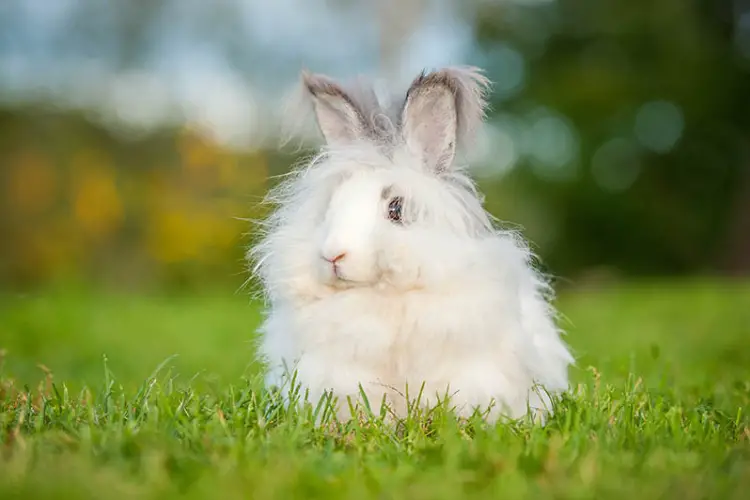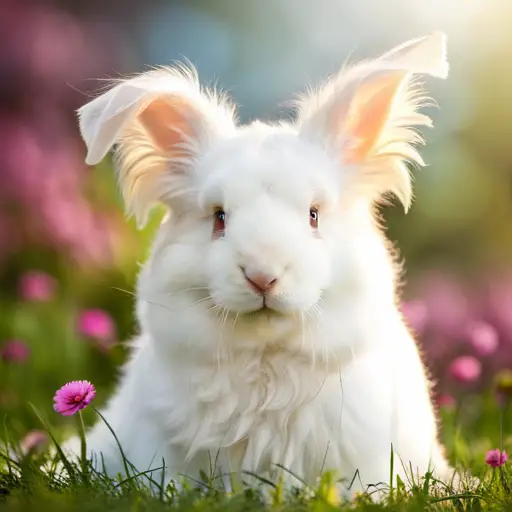Angora rabbits are primarily known for their luxurious wool, which has been prized for centuries in the production of high-quality garments and accessories.
However, as with many domesticated livestock animals, the question of whether Angora rabbits can be raised for meat often arises.
In this blog post article, we’ll explore the suitability of Angora rabbits for meat production, taking into account various factors such as meat quality, breed characteristics, and ethical considerations.
Understanding Angora Rabbits
Before delving into the meat production aspect, it’s essential to understand the unique characteristics of Angora rabbits:
- Breed Types: There are four recognized Angora breed varieties: English, French, Satin, and Giant. Each breed has distinct traits and wool characteristics.
- Wool Production: Angora rabbits are bred primarily for their high-quality wool, which grows continuously and requires regular grooming.
- Body Size: Compared to meat rabbit breeds, Angora rabbits tend to have smaller body sizes, with the exception of the Giant Angora variety.
- Temperament: Angora rabbits are generally known for their gentle and docile nature, making them suitable as companion animals.

Meat Quality and Yield
When considering Angora rabbits for meat production, it’s important to evaluate the meat quality and yield potential:
Meat Quality
- Tenderness: Angora rabbit meat is generally considered tender and delicate in texture, similar to other rabbit breeds.
- Flavor: The flavor of Angora rabbit meat is often described as mild and slightly gamey, comparable to other lean meats like chicken or turkey.
- Leanness: Like most rabbit breeds, Angora rabbit meat is lean and low in fat, making it a potentially healthy protein source.
Meat Yield
- Body Size: Due to their smaller body size compared to specialized meat rabbit breeds, Angora rabbits tend to have lower meat yields per individual animal.
- Wool-to-Meat Ratio: Angora rabbits have a higher proportion of wool relative to their body weight, which can impact the overall meat yield.
- Feed Conversion Efficiency: Angora rabbits may have lower feed conversion efficiency compared to meat rabbit breeds, meaning they require more feed to produce the same amount of meat.

Ethical Considerations
When considering raising Angora rabbits for meat, it’s important to address the ethical considerations involved:
- Dual-Purpose Approach: Some breeders and farmers may adopt a dual-purpose approach, where Angora rabbits are primarily raised for their wool, and meat production is a secondary consideration or byproduct.
- Animal Welfare: Ensure that Angora rabbits raised for meat are provided with appropriate living conditions, proper nutrition, and humane treatment throughout their life cycle.
- Ethical Slaughter Practices: If raised for meat, it’s crucial to follow ethical and humane slaughter practices to minimize suffering and ensure a respectful end-of-life process.
Alternative Meat Rabbit Breeds
While Angora rabbits can potentially be raised for meat, there are other rabbit breeds that are specifically bred and optimized for meat production:
- New Zealand: One of the most popular meat rabbit breeds, known for its rapid growth rate, excellent feed conversion, and high meat yield.
- Californian: Another widely-used meat breed, characterized by its large size, fast growth, and high-quality meat.
- Flemish Giant: As the name suggests, this breed is one of the largest rabbit breeds, known for its substantial meat yield and docile temperament.
These specialized meat rabbit breeds may be more suitable for commercial or large-scale meat production due to their optimized traits and higher meat yields.

Table: Comparison of Angora and Meat Rabbit Breeds
| Characteristic | Angora Rabbits | Meat Rabbit Breeds |
|---|---|---|
| Primary Purpose | Wool Production | Meat Production |
| Body Size | Smaller (except Giant Angora) | Larger |
| Meat Yield | Lower | Higher |
| Feed Conversion Efficiency | Lower | Higher |
| Meat Quality | Tender, mild flavor | Similar to Angora |
Best Practices for Raising Angora Rabbits for Meat
If you choose to raise Angora rabbits for meat, either as a primary or secondary purpose, it’s essential to follow best practices to ensure the well-being of the animals and the quality of the meat:
- Provide Proper Nutrition: Offer a balanced diet formulated for Angora rabbits, including high-quality hay, pellets, and fresh vegetables.
- Maintain Appropriate Housing: Ensure adequate living space, clean bedding, and proper ventilation for the rabbits.
- Implement Regular Grooming: Regular grooming is essential to prevent wool matting and potential health issues.
- Monitor Health and Welfare: Closely monitor the rabbits’ health and well-being, addressing any issues promptly with the assistance of a veterinarian.
- Follow Ethical Slaughter Practices: If raising Angora rabbits for meat, ensure that humane and ethical slaughter practices are followed.
Conclusion
While Angora rabbits can potentially be raised for meat, their primary purpose is wool production, and they may not be the most efficient or ideal choice for large-scale meat production. Their smaller body size, lower meat yield, and higher wool-to-meat ratio make them less suitable for commercial meat operations compared to specialized meat rabbit breeds.
However, for small-scale or subsistence farming, raising Angora rabbits for meat can be a viable option, particularly if adopting a dual-purpose approach where wool production is the primary focus, and meat is a secondary byproduct. It’s crucial to consider ethical factors, ensure proper animal welfare practices, and follow best practices for raising and handling Angora rabbits.
Ultimately, the decision to raise Angora rabbits for meat should be based on a careful evaluation of your specific goals, resources, and ethical considerations, while prioritizing the well-being of the animals and adhering to responsible and sustainable farming practices.


